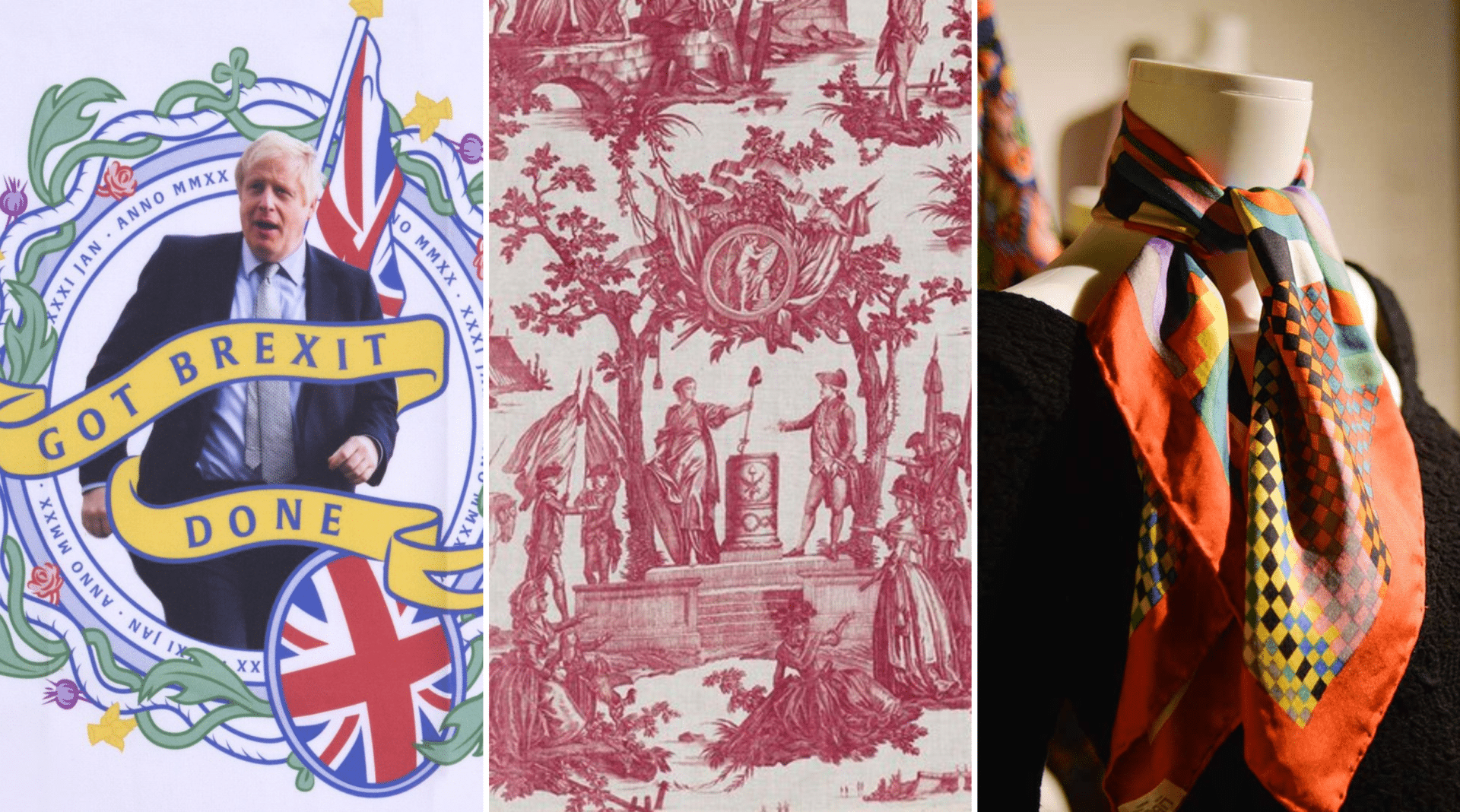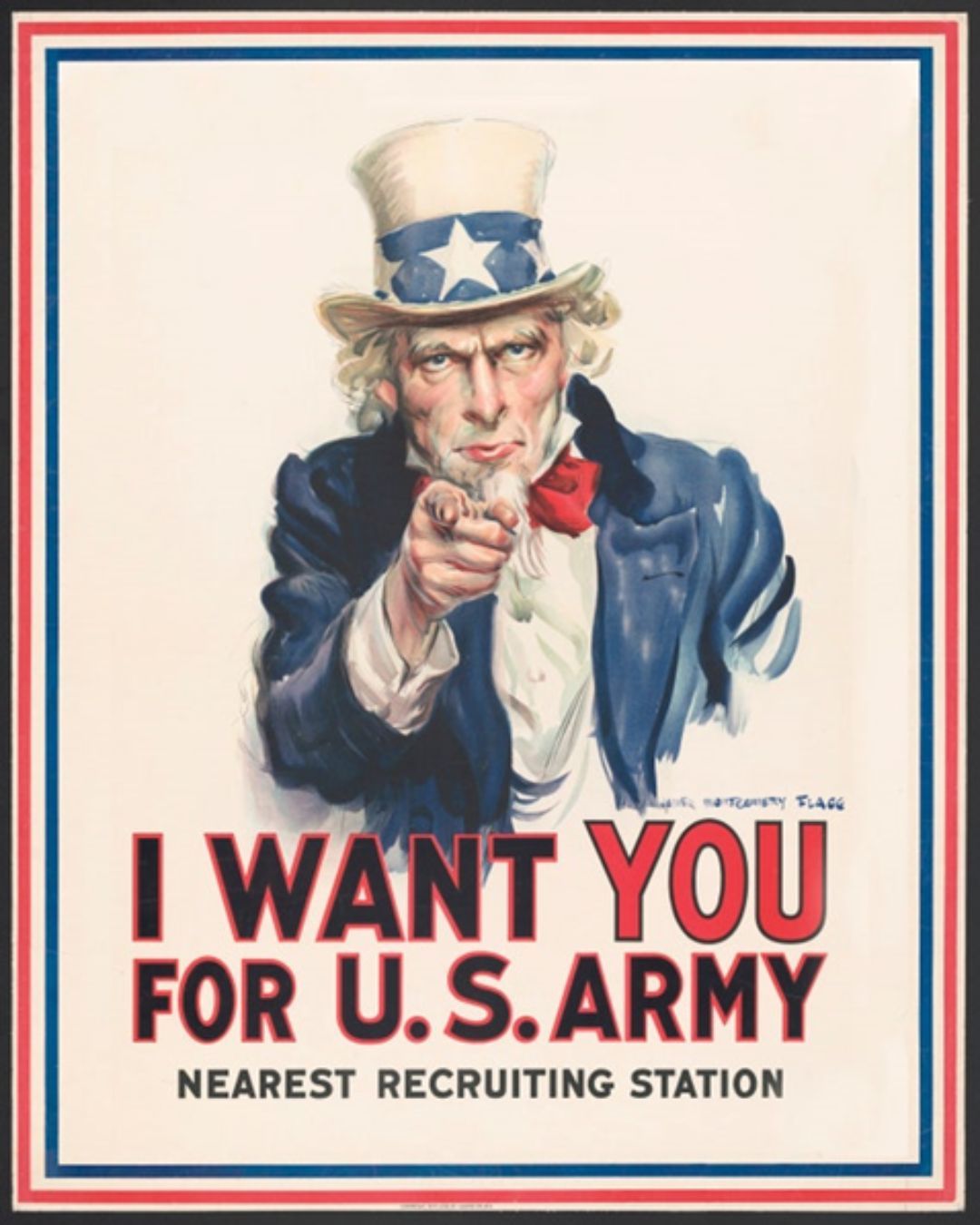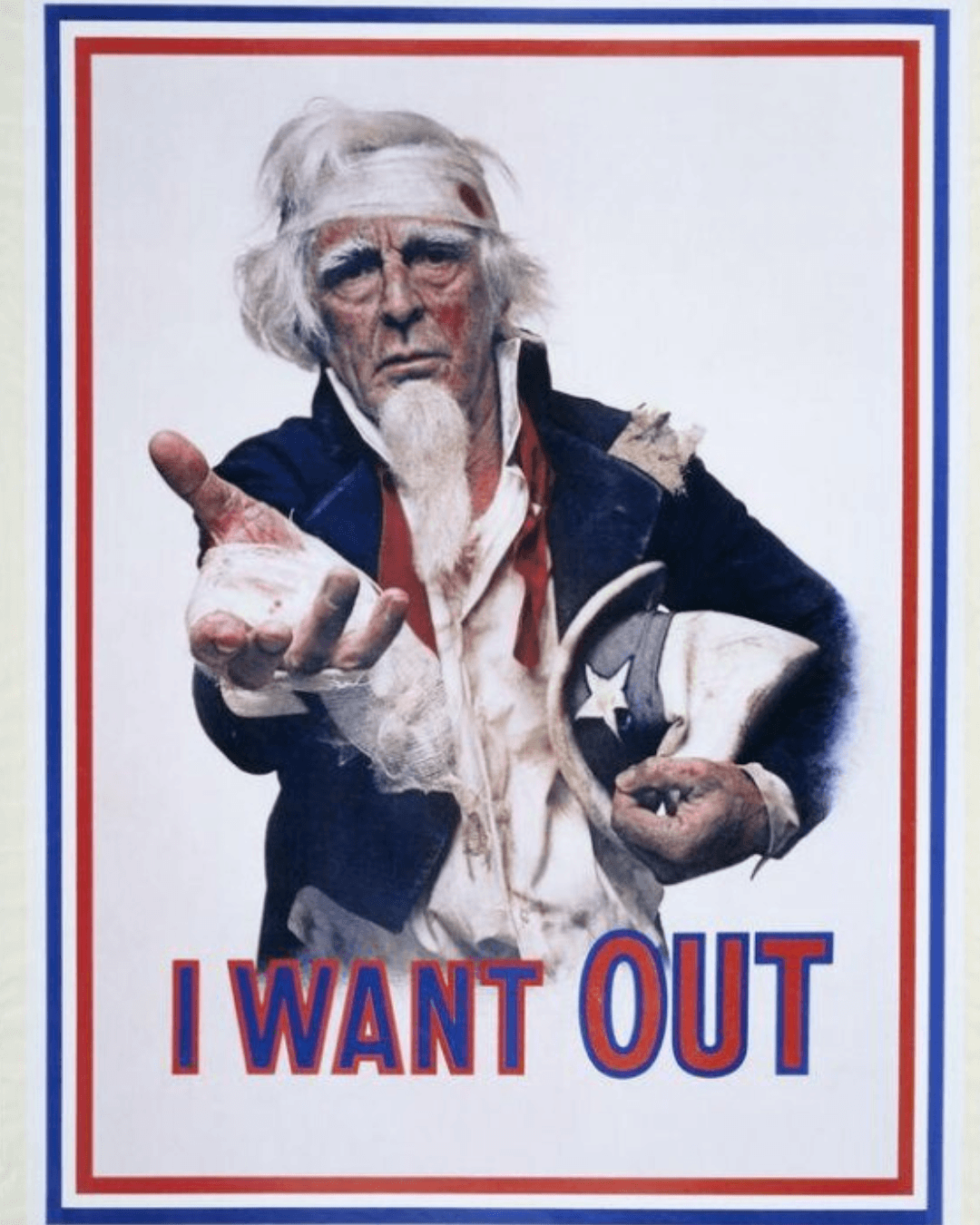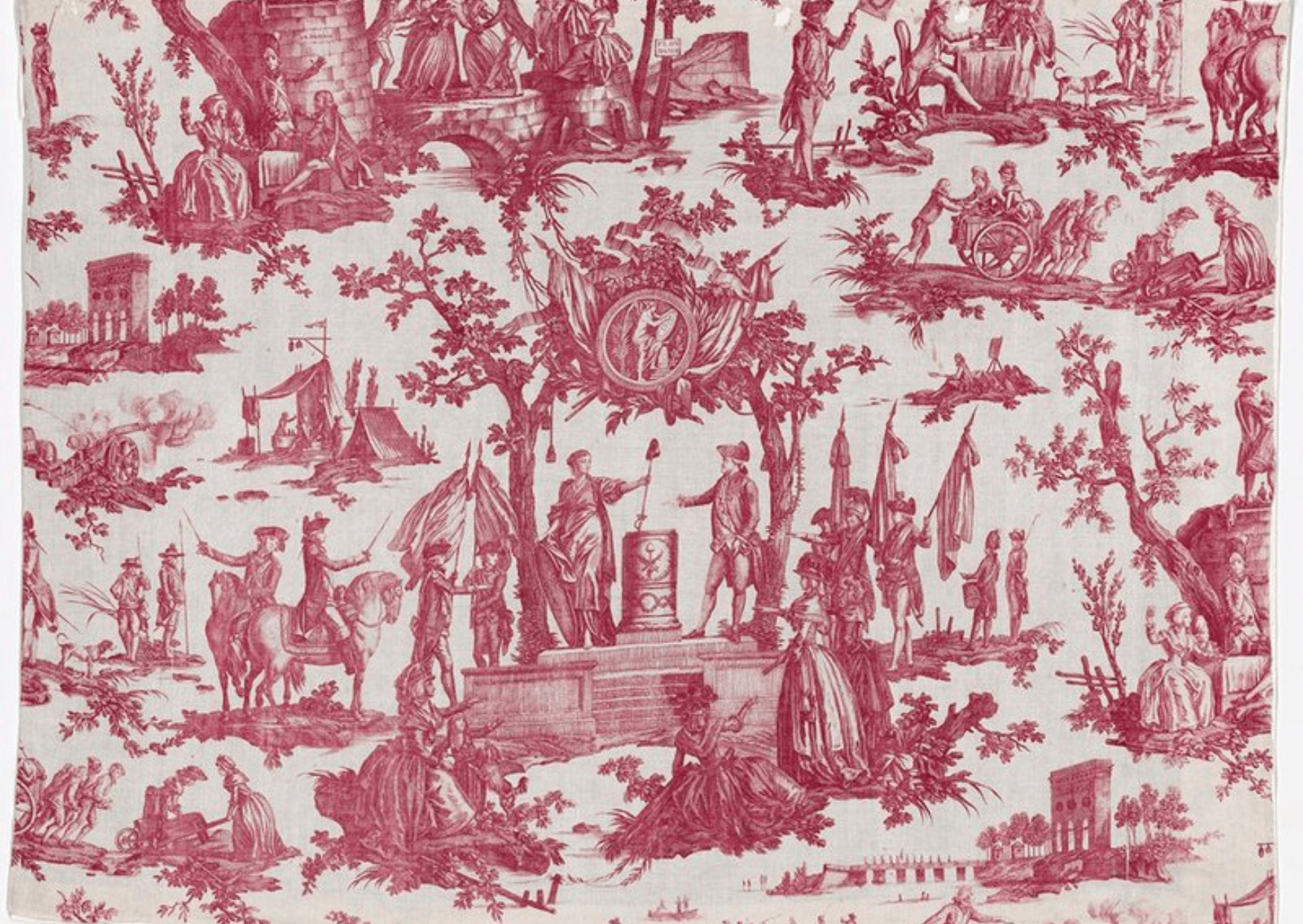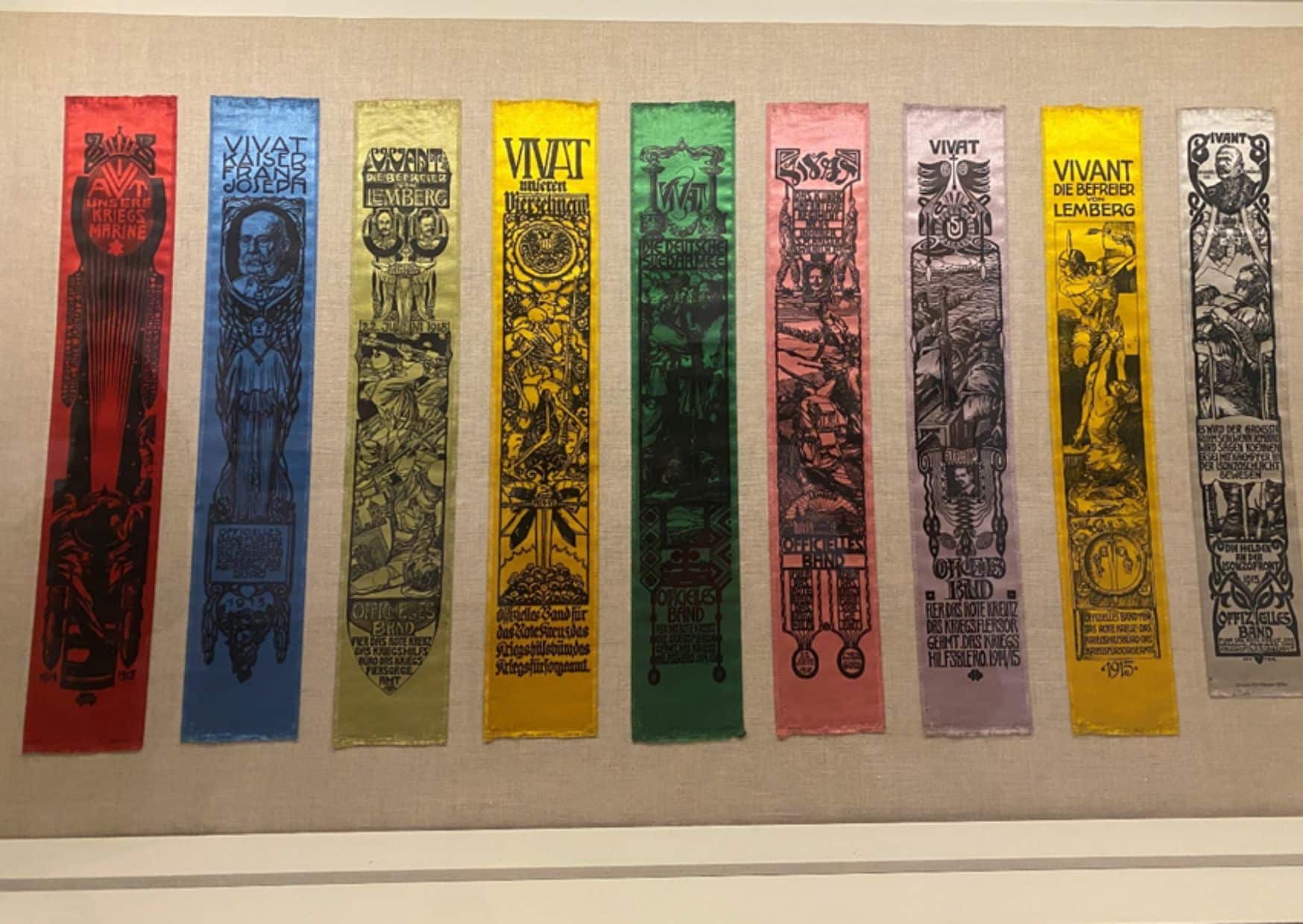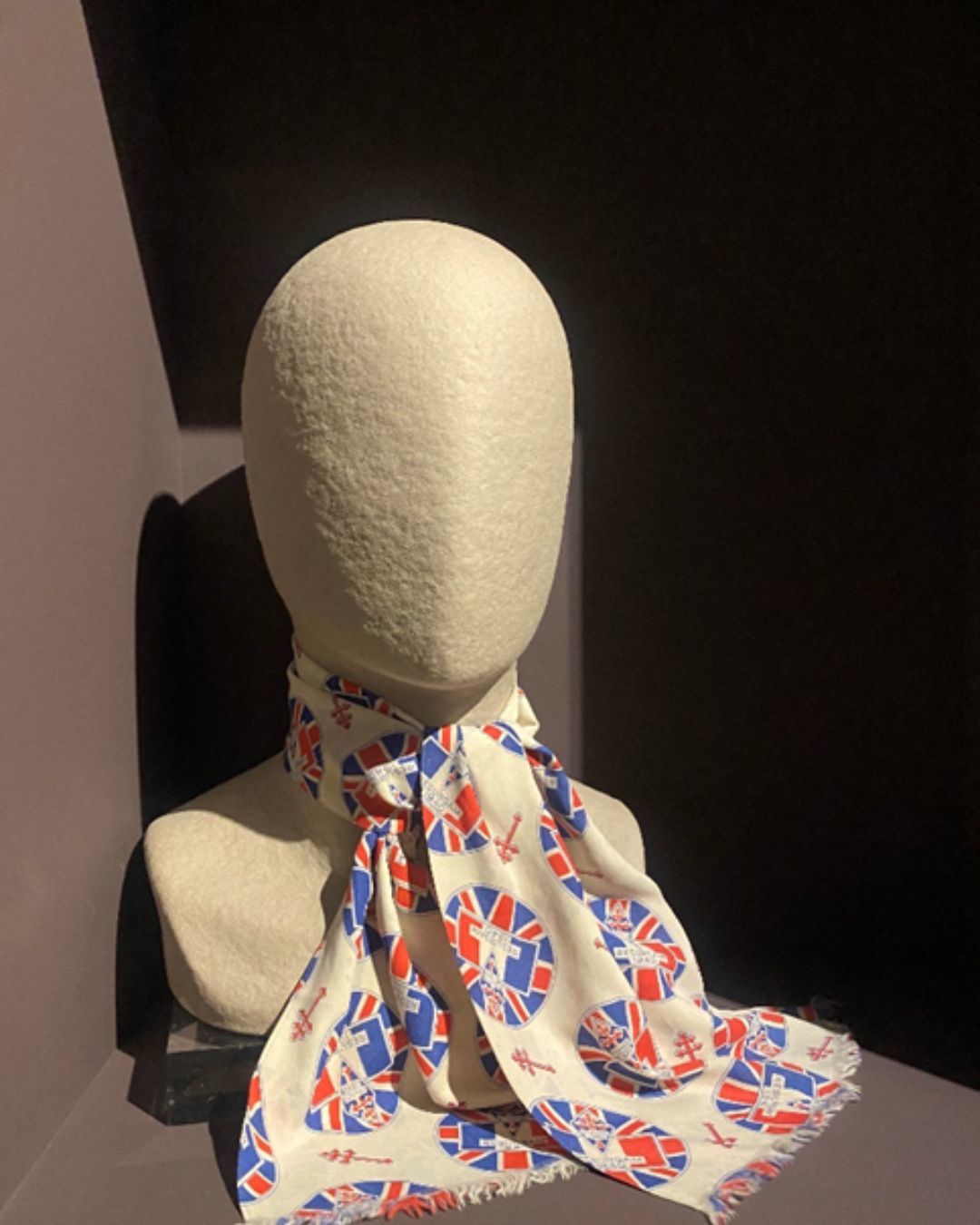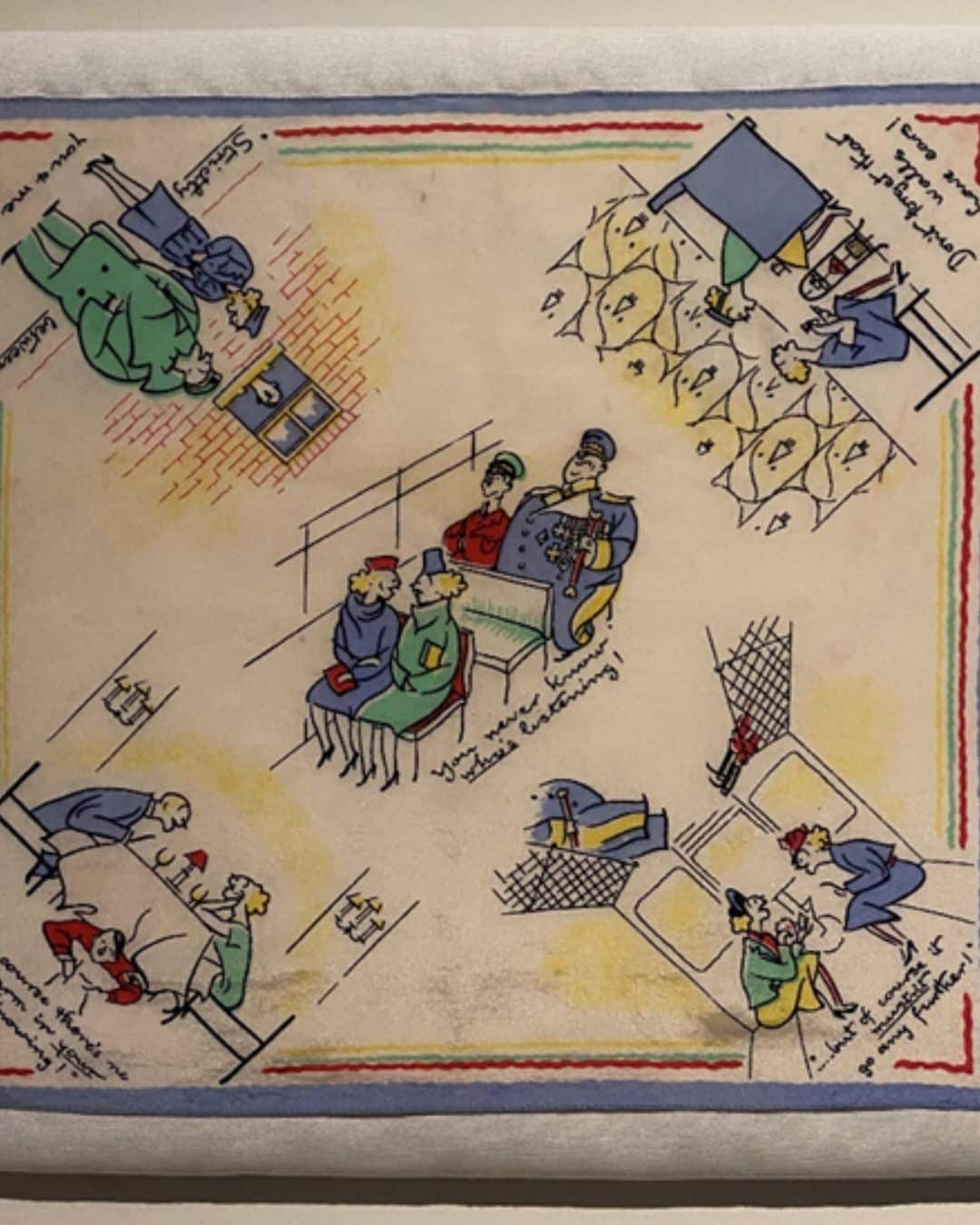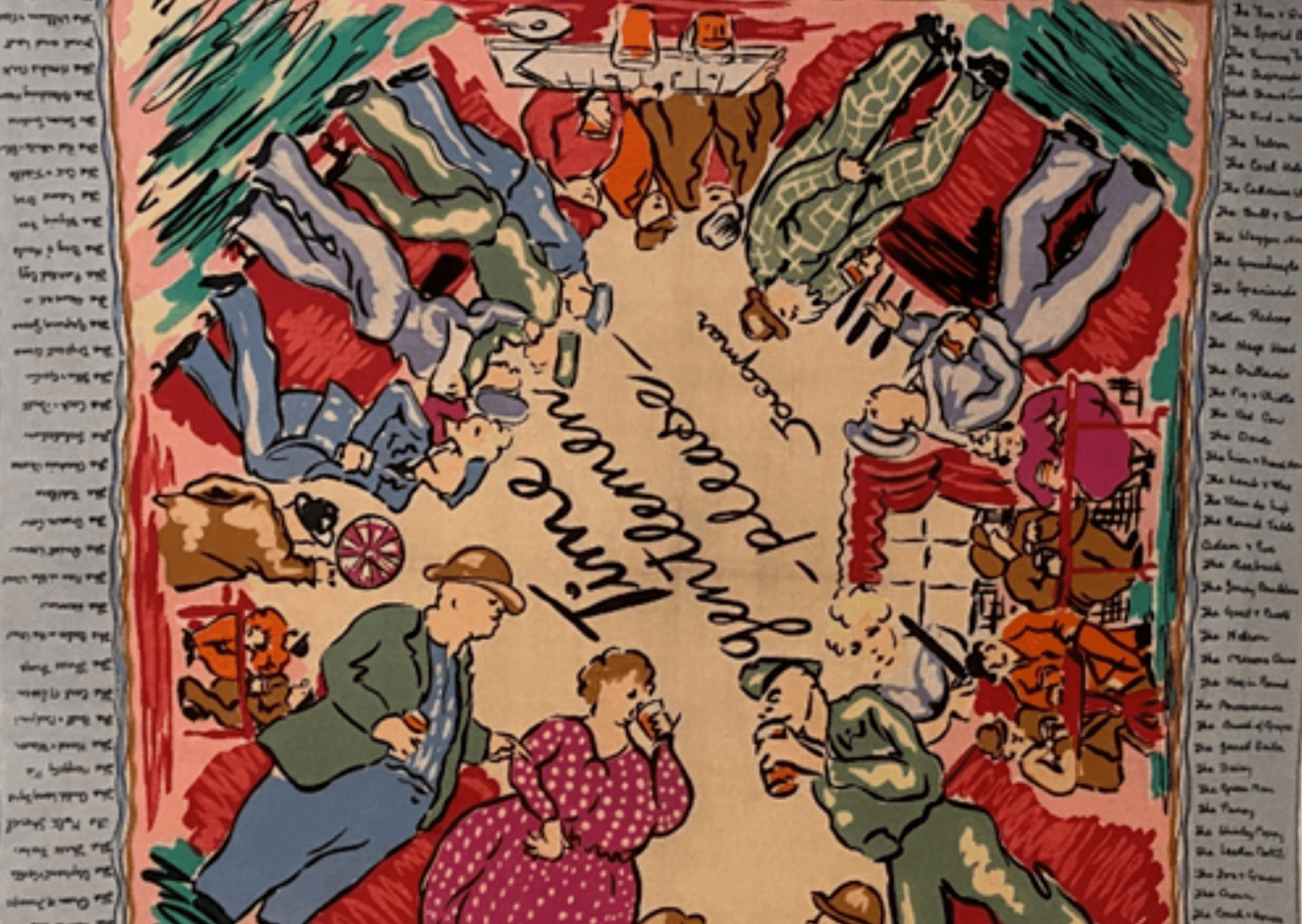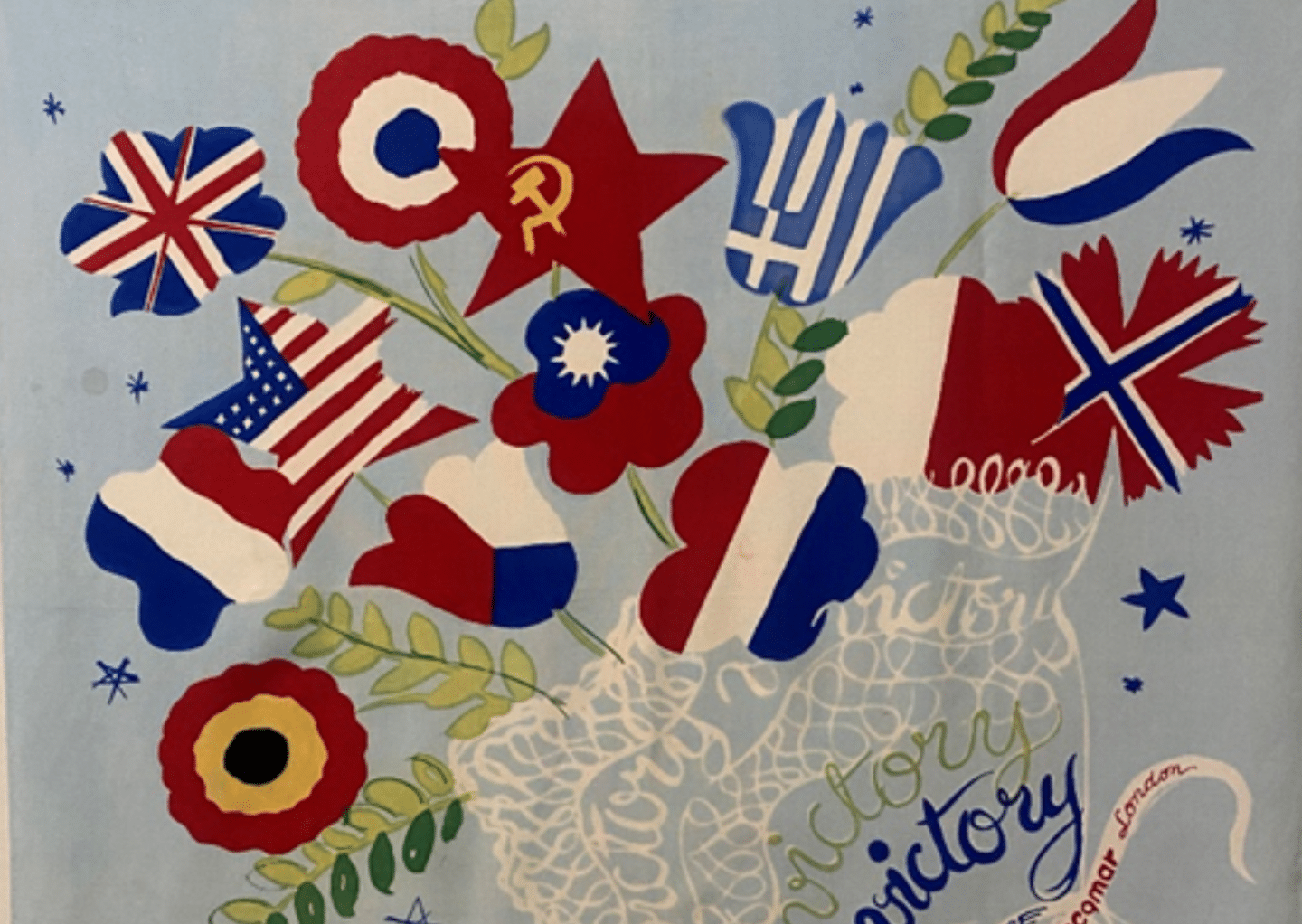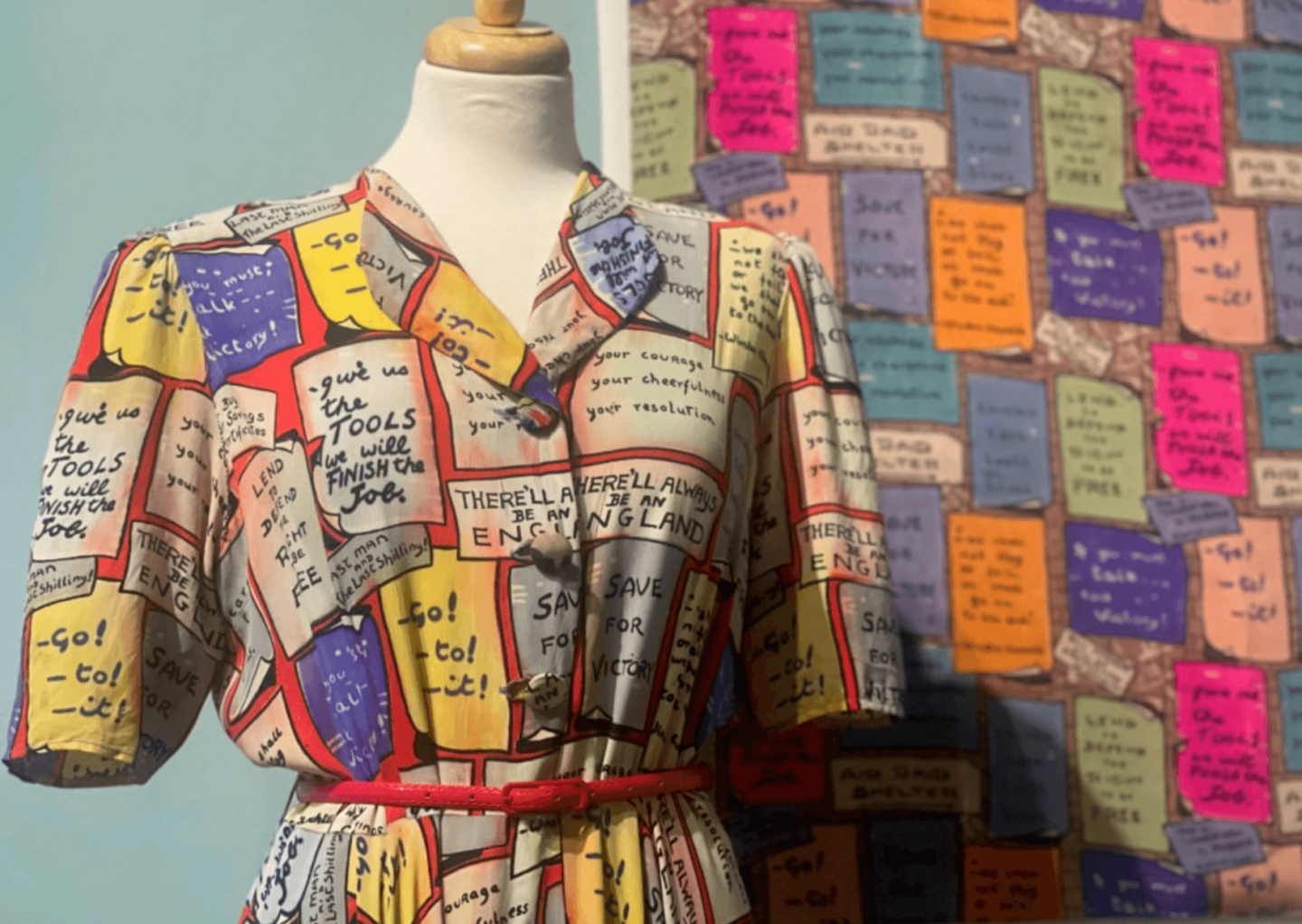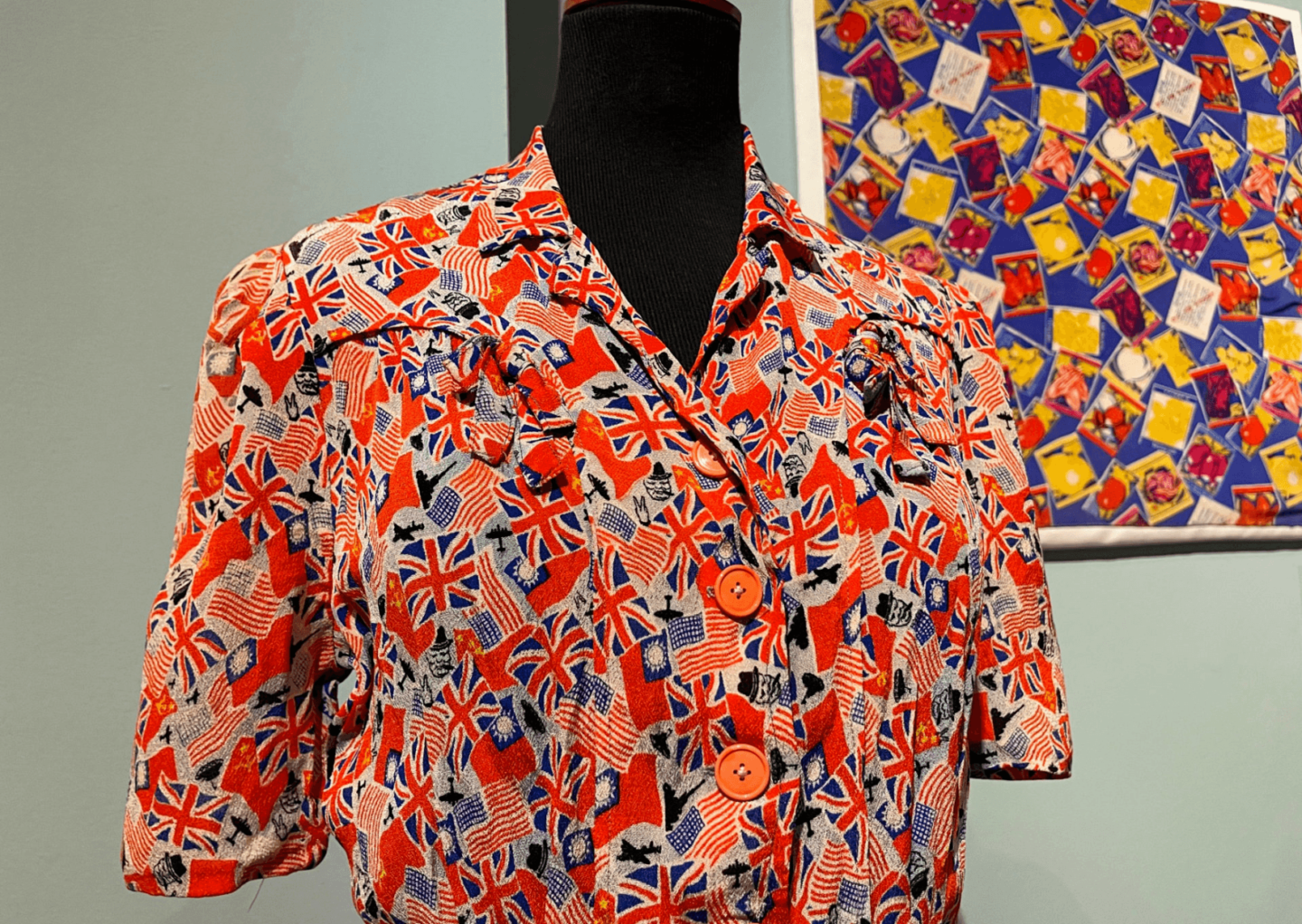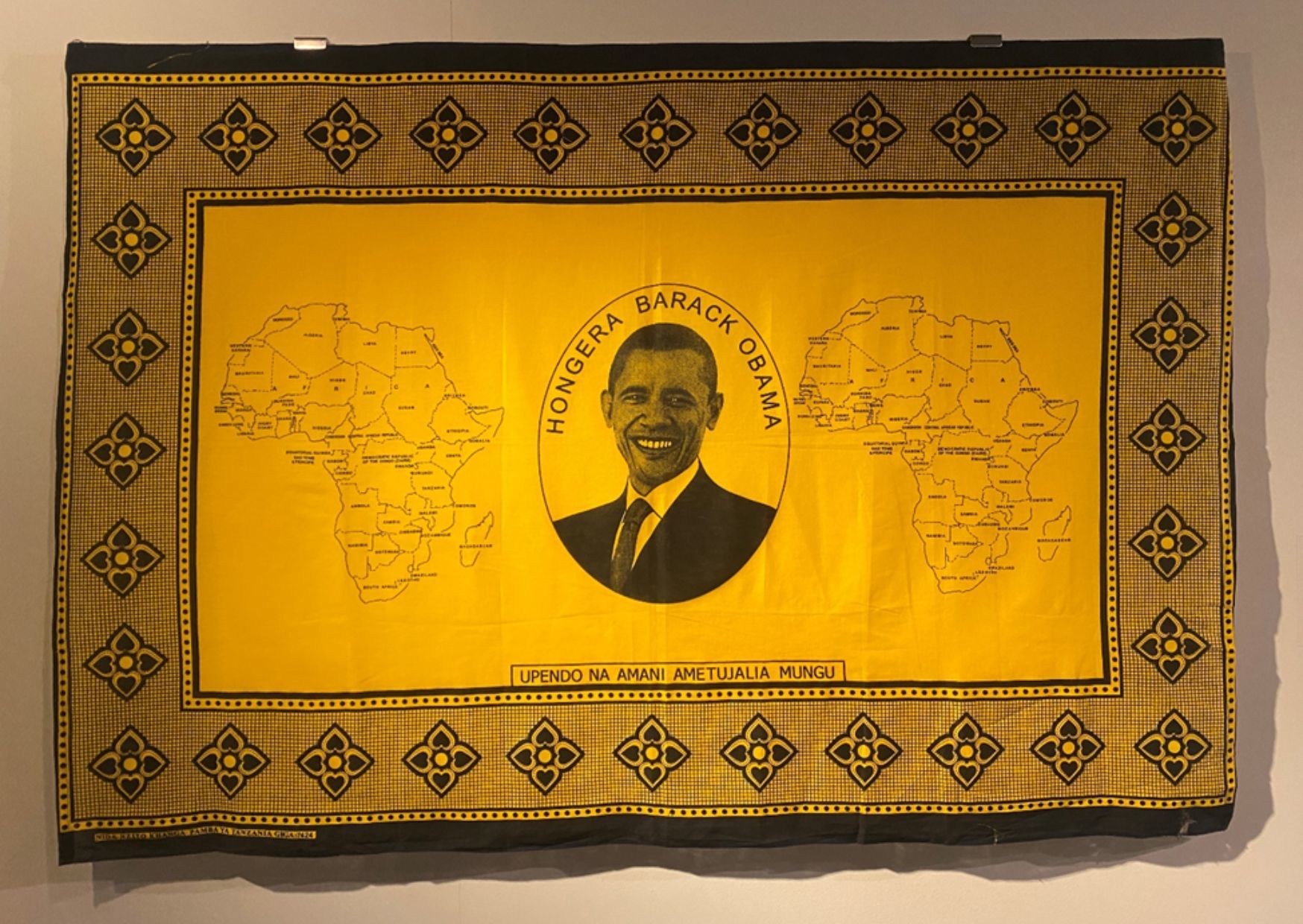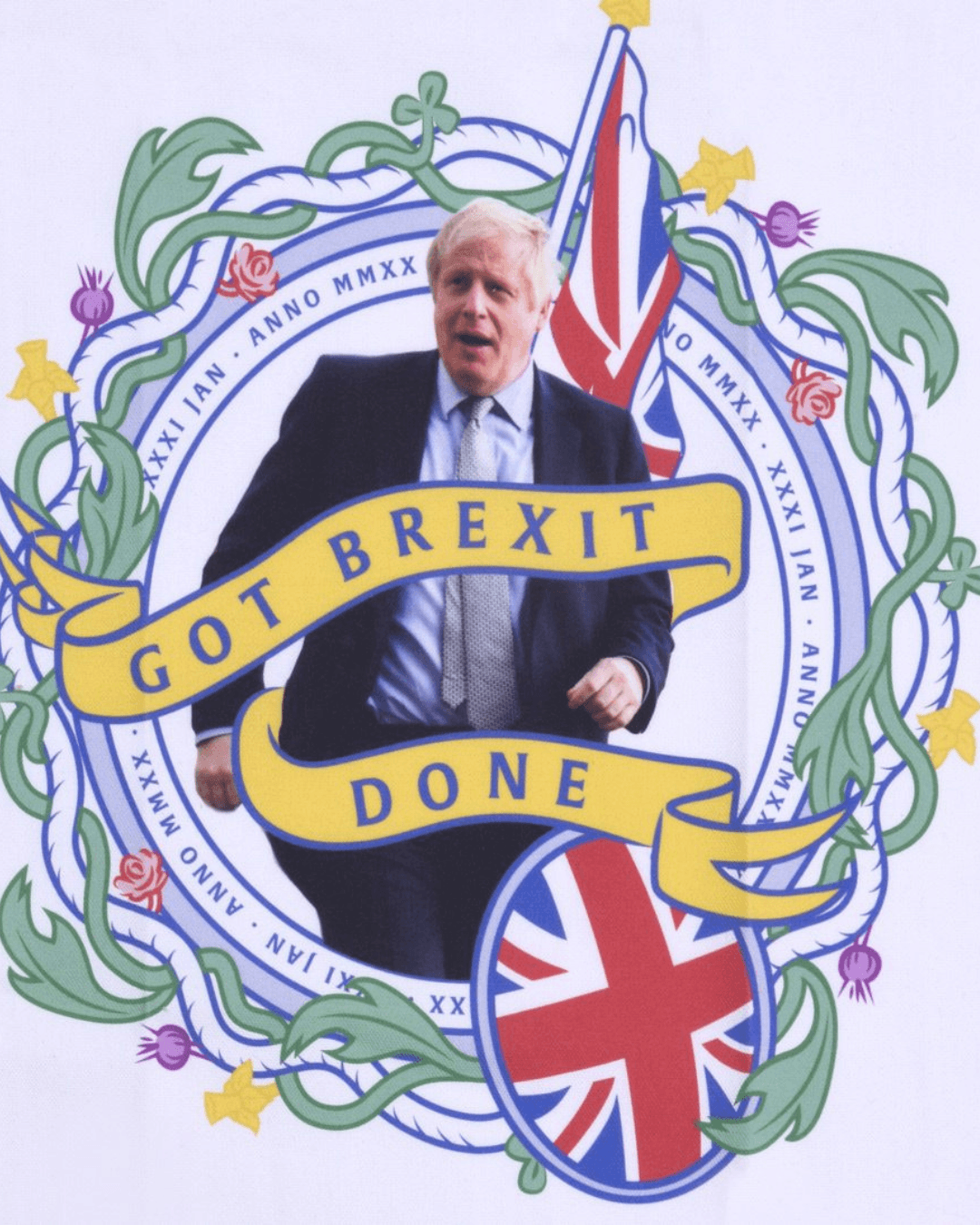We recently visited ‘The Fabric of Democracy: Propaganda Textiles from the French Revolution to Brexit’ exhibition, running until March 3rd at the Fashion and Textiles Museum in London. The exhibition delves into the enchanting world of textiles and their role in shaping narratives, particularly through the lens of propaganda. Spanning over 200 years of history, from the French Revolution to Brexit, this exhibition offers a captivating exploration of the power of textiles to convey political messages.
In 1780, just before the French Revolution, the iconic ‘Toile de Jouy’ emerged, renowned for its intricately detailed pastoral scenes. The below furnishing fabric is a representation of the declaration of The First Republic in 1792.
Fast-forward to the 1930s, a silk scarf featuring Mussolini and other leaders serves as a testament to the widespread use of textiles as a means of glorifying political figures and ideologies during this tumultuous period.
Journeying through time, the exhibition traces pivotal moments in democratic history, exploring the evolution of mass politics and ideological movements. Below is a set of silk ribbons sold in Germany and Austria during World War I for the Red Cross. They embody the fusion of art and propaganda, with designs reflecting elements of modern art movements.
At the core of the exhibition lies the profound impact of clothing and textiles during the Second World War, where they played a pivotal role in Britain’s war effort. Designs were crafted for export to generate funds both domestically and abroad. Among the poignant pieces showcased is a scarf adorned with the overlapped flags of France and Britain, bearing the hopeful message “I shall rise again”.
Jacqmar of London, a British silk scarves company founded in 1932, played a significant role during WWII by specialising in propaganda prints for the armed forces, allies and home front. Their commitment to using any available materials, including offcuts, highlights the resourcefulness of the era.
The “You never know who’s listening” handkerchief offers a blend of humour and seriousness, echoing the sentiment of the “Careless Talk Costs Lives” campaign. Depicting Nazis eavesdropping on British conversations, this piece serves as a stark reminder of the importance of discretion during wartime.
The exhibition showcases how propaganda extended beyond scarves to include dresses, demonstrating the widespread utilisation of fashion as a means of conveying political messages and fostering national unity during times of adversity.
Transitioning to the Korean War era of 1950, a scarf adorned with symbols of peace, liberty and unity serves as a poignant expression of hope amidst conflict. Bearing the message “Let all the people be friends” or “Why not go back to her?”, this handkerchief embodies a call for reconciliation and harmony.
Despite the evolution of technology and the transition to a more digital era, the power of fabrics in conveying messages of recognition and representation remains undiminished. A notable example is the large cotton cloth worn by women across East Africa, celebrating Barack Obama’s historic presidency. The Swahili text reads, “Congratulations, God has given us love and peace,” highlighting Obama’s Kenyan heritage and the collective pride felt by the region.
Additionally, the exhibition presents a contrasting portrayal of propaganda relating to Brexit, showcasing the polarised viewpoints and contentious debates surrounding this divisive issue.
We hope we’ve inspired you to visit this interesting and informative exhibition.

